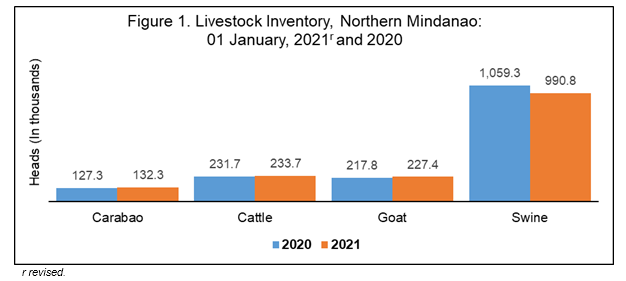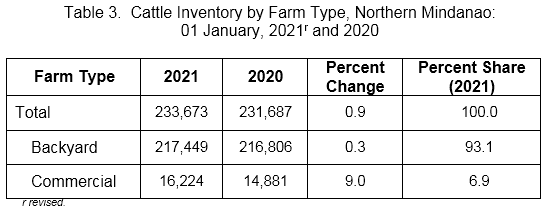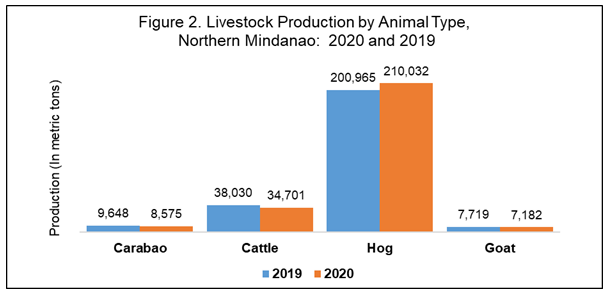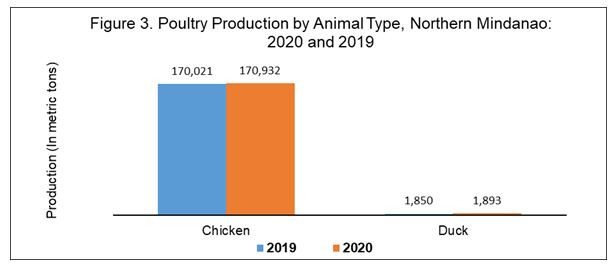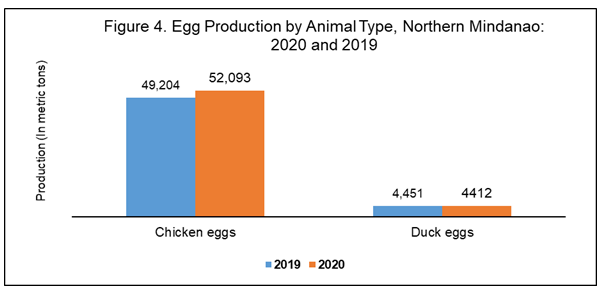REGIONAL INVENTORY OF LIVESTOCK
The total swine inventory in Region X as of 01 January 2021 was recorded at 990,765 heads. (Figure 1)
The inventory decreased by 6.5 percent from the previous year’s level of 1,059,320 heads. About 56.5 percent or 559,699 heads were raised in backyard farms while the remaining 43.5 percent or 431,066 heads were grown in commercial farms. (Table 1)
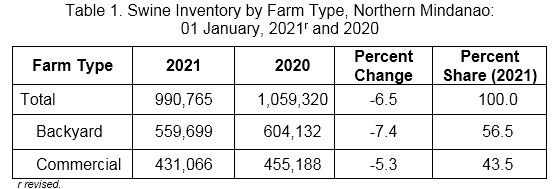
The total inventory of goat in the region increased to 227,439 heads. This was higher by 4.4 percent from the previous year’s record. About 98.0 percent of these stocks were raised in the backyard farms while only 2.0 percent were reared in commercial farms. (Figure 1 and Table 2)
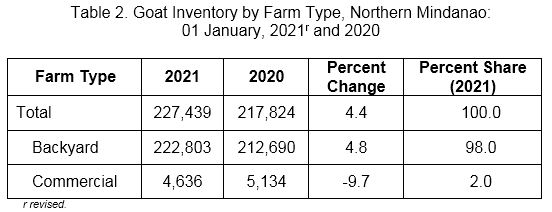
Inventory of cattle population had increased to 233,673 heads, higher by 0.9 percent from last year’s level of 231,687 heads. Around 93.1 percent of these cattle were grown in backyard farms while the remaining 6.9 percent were raised in the commercial farms. (Figure 1 and Table 3)
Moreover, carabao in the region had a total count of 132,280 heads. It recorded an increase of 3.9 percent as compared to the 127,284 heads recorded last year. Almost all of the carabao stocks were raised in the backyard farms. Less than one percent were raised in the commercial farms. (Figure 1 and Table 4)
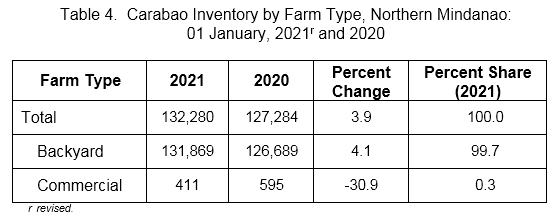
LIVESTOCK AND POULTRY PRODUCTION
In 2020, hog production in Northern Mindanao was recorded at 210,032 metric tons, reflecting an increase of 4.5 percent from the previous year’s production level of 200,965 metric tons. The production of goat in the region decreased to 7,182 metric tons, lower by 7.0 percent from the previous year’s record of 7,719 metric tons. Moreover, cattle production decreased to 34,701 metric tons, lower by 8.8 percent from last year’s record. On the other hand, carabao production declined to 8,575 metric tons, recording a decrease of 11.1 percent from last year’s production level. (Figure 2)
Figure 3 shows that chicken production in the region improved by 0.5 percent, from 170,021 metric tons in 2019 to 170,932 metric tons in 2020. On the other hand, duck production also increased by 2.3 percent, from 1,850 metric tons in 2019 to 1,893 metric tons in 2020.
In 2020, chicken egg production in the region was estimated at 52,093 metric tons. This was 5.9 percent higher than the previous year’s production level of 42,204 metric tons. However, production of duck eggs decreased by 0.9 percent from last year’s record of 4,451 metric tons. (Figure 4)
JANITH C. AVES, CE, DM.
(Chief Statistical Specialist)
Officer-in-Charge
SBB/LCH
For further inquiries, you may contact:
Statistical Operations & Coordination Division
Philippine Statistics Authority Regional Statistical Service Office 10
Limketkai Module-2 BPO & Cyberpark Bldg., Rosario Crescent,
Limketkai Center, Brgy 31, Cagayan de Oro City
TECHNICAL NOTES
The data for this special release were collected by the Philippine Statistics Authority (PSA) through the two (2) major surveys, namely:
1) The Backyard Livestock and Poultry Survey (BLPS) which covers one (1) of the four (4) replicate samples of the Palay and Corn Production Survey (PCPS); and
2) The Commercial Livestock and Poultry Survey (CLPS). A livestock farm is considered commercial when its operation satisfies at least one of the following conditions: a) at least 21 heads of adults and zero young, b) at least 41 heads of young animals or c) at least 10 heads of adults and 22 heads of young animals. A poultry farm is considered commercial when its operation satisfies at least one of the following conditions: a) at least 500 layers, b) at least 1,000 broilers or c) 100 layers and 100 broilers, if raised in combination. A duck farm is considered commercial if it has a raising capacity of at least 100 birds of duck regardless of age.
Data collection for swine and chicken is done quarterly while data collection is done semi-annually for goat, cattle, carabao, and duck farms. BLPS is conducted during the first seven (7) days of the first month after the reference quarter while CLPS is conducted during the last eight (8) days of the last month of the reference quarter or semester.
CONCEPTS AND DEFINITIONS
Volume of production refers to the volume of locally-raised animals disposed for dressing including those which were shipped out to other regions/provinces for slaughter or dressing. This is expressed in thousand metric tons, liveweight
Inventory refers to the actual number of animals present in the farm as of the specific reference date.
Farmgate price refers to the price received by raisers for their produce at the location of farm. Thus, the marketing cost such as the transport and other marketing costs (if any) incurred in selling the produce are not included in the farmgate prices.
